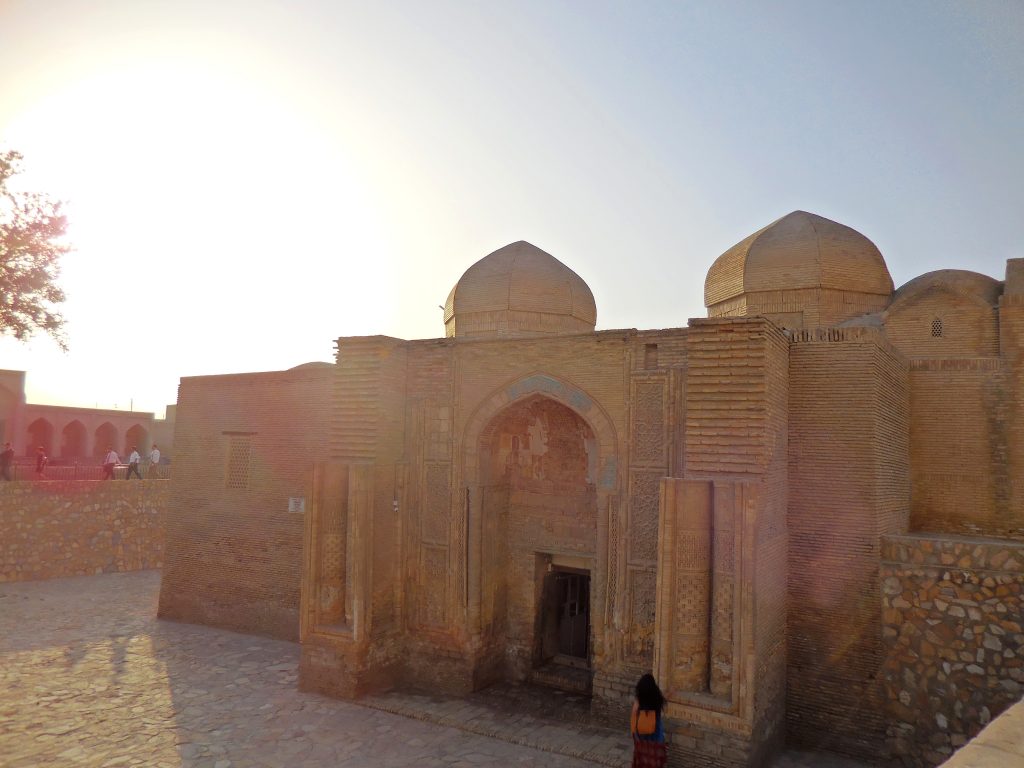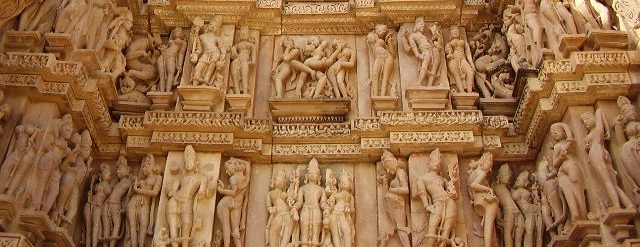The Samonids Mausoleum and the Magoki Attari Mosque, Bukhara.
The Samonids Mausoleum and the Magoki Attari Mosque, Bukhara.
Ismail Samonid Mausoleum

Not far from the ancient walls, inside the Samonids Park, there is one of the most original Mausoleums in Central Asia, the one of the Samonids; built between the ninth and tenth centuries. Its peculiarity lies in the fact of being a nearly perfect gray cube, surmounted by a semi-spherical dome. The cube represents the stability of the Earth, while the dome indicates the celestial vault. From ancient religious themes and from Sufism, this structure indicates the union between Heaven and the Earth. Let us remember how the ancient deity of the steppe was represented precisely by Heaven, called Tengri.
Its four sides, made of bricks, are identical to each other and end at the corners with domed pillars. On each façade there is an entrance with a complex modular structure. The theme of combining small tesserae of bricks is more evident: in a play of lines and spaces between full and empty, the tiles are combined with them in a clever graphic system between the horizontal and the vertical. Light plays a predominant role, as it highlights the space with a shaded area alternated with a zone of light or penumbra, from which the exterior appears.

The Samonids pearl is recognized, both for their architectural complexity and for historical dating, as a medieval masterpiece in Central Asia. Samonids Mausoleum was founded by the ruler Ismail of the Samonids for the father, the founder of the emirate of Bukhara. Then it was used as burial place for descendants is presented, including the emir Ismail, who died in 907, and his nephew Nasr II ibn Ahmad, whose name was found on a wooden plaque at the entrance.
When Genghis Khan invades the city, the inhabitants of Bukhara run here to protect the Mausoleum and cover it with earth; as if it were a small hill. None of the invaders discovers the truth and after a century is brought to light again, intact.
Here is the address.
The Magoki Attari Mosque

Not far from Poi Kalyan, another place of interest is definitely the Magoki Attari Mosque (“The Deep Mosque”), the oldest in the city as evidenced by its foundations at an lower level from the city. In front of the Mosque, there was a market of spices and medicinal herbs, certainly active during the Silk Road period.
What is most striking is its uniquely decorated facade, rebuilt in the twelfth century. Above the narrow ogival niche from which visitors enter through a wooden door, there’s an elaborate arch with two carved pillars and bricks elaborated in enamelled phytomorphic complements from which it can be seen the original blue color. On the sides there are some terracotta plaques with complex geometric motifs in high relief and, embossed, rectangular pillars inside which are placed adjacent columns cut in half.
In the sixteenth century the building was used as a closed Mosque with six internal pillars on which the ceiling was placed. In 1930, layers of majolica brick floors were discovered under the southern portal. Today there is inside a Museum of fabrics and carpets.
For more information on what to visit in the city, like the Madras Nadir, click here.
Photo by Eva Zalesakova
Source: A.V., Bukhara, the city and legends, Davr Nashriyoti, Tashkent, 2014
Tiziano Terzani, Good night Mr. Lenin, TEA, 1992, p.296.


Pingback: Ulugbek Madras and Abdullazis-Khanbek Madras, Bukhara
Pingback: Ulugbek Madras and Abdullazis-Khanbek Madras, Bukhara | Erica Leoni
Pingback: The Kosh complex: Modari-Khan Madras and Abdullah-Khan Madras, Bukhara | Erica Leoni